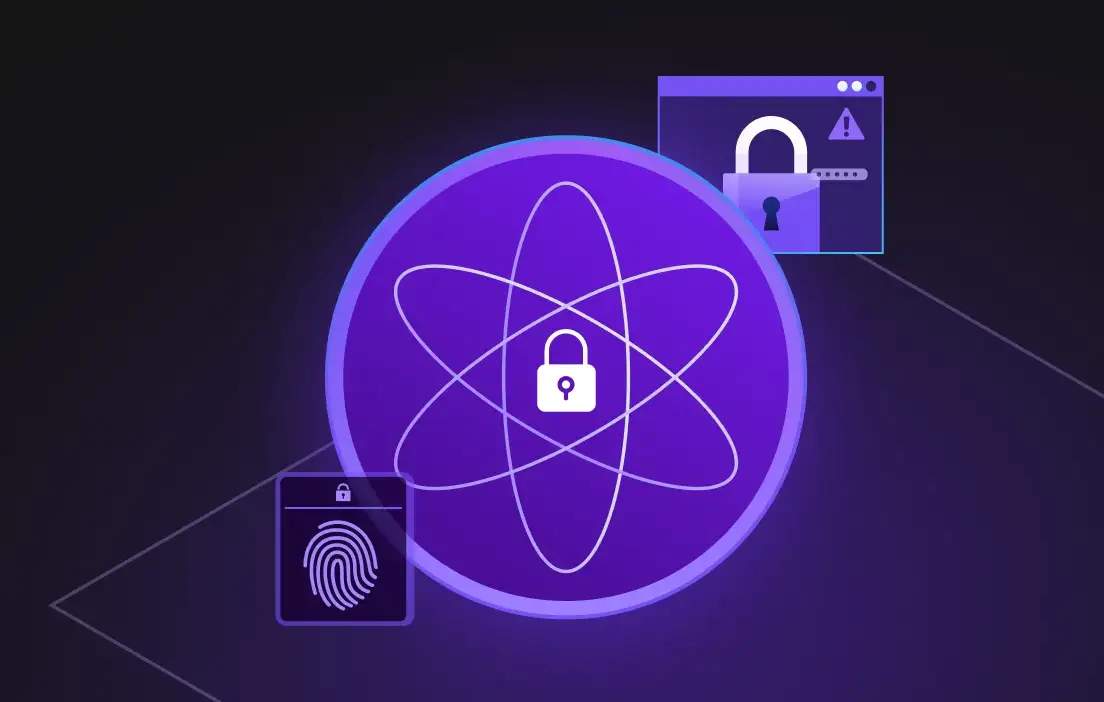Quantum computing is coming fast, and it will usher in a new era of security challenges that reshape how we protect sensitive data. Post-quantum security is no longer just a theoretical concern; it’s an urgent reality that forward-thinking organizations are starting to address.
The question is no longer if quantum computing will impact data security, but when will it do so.
In this article, we’ll explore:
- Why post-quantum cybersecurity matters now.
- How to think about security with quantum cryptography versus classical cryptography.
- The practical PQC security measures organizations should consider.
- How to position your systems to be post-quantum secure without adding unnecessary operational friction (or drama).
Read on to learn how to future-proof your data protection strategies and take actionable steps toward a quantum-resilient future.
Why Post-Quantum Cyber Security Matters Now
The term post-quantum cybersecurity refers to the defenses you need to protect systems and data against the capabilities of quantum computers. While traditional encryption methods—RSA, ECC, and so on—have served us well, quantum computers will one day make them ineffective and expose vast amounts of sensitive data to decryption.
You may be (rightfully) asking yourself a valid question: “Isn’t quantum computing still years away?” The reality is that while large-scale quantum computers capable of breaking RSA or ECC aren’t here yet, the progress in superconducting qubits, error correction, and stable quantum hardware is making massive strides. Governments and researchers have already achieved milestones in quantum capabilities, and so the countdown is on.
Equally concerning is the risk of “harvest now, decrypt later,” a method where the bad guys collect encrypted data today with plans to decrypt it in the future once quantum capabilities are available.
This is particularly problematic for industries that work with ultra-sensitive data, including healthcare, finance, government, and critical infrastructure.
A good place to start for those looking to get ahead of these challenges is the NIST Post-Quantum Cryptography Project [source], which is setting the standard in quantum-resistant algorithms.
Aligning with emerging standards early will go a long way in helping you avoid last-minute migrations that cause a scramble, create risk, and lead to disruption across the business.
Security in Quantum Cryptography: A Primer
Today, security in quantum cryptography has two main paths:
- Quantum Key Distribution (QKD): This is where the principles of quantum mechanics are used to securely distribute encryption keys. QKD is promising but impractical because it requires specialized and costly hardware and infrastructure unavailable to most businesses today.
- Post-Quantum Cryptography (PQC): Uses classical computing techniques to build algorithms that resist quantum attacks. This approach can be integrated into current infrastructures, making it a more practical route for near-term post-quantum security planning.
Most organizations will focus on PQC because it enables them to deploy post-quantum security with existing hardware while preparing for the threats of the inevitable quantum era.
Algorithms like Kyber (for key encapsulation) and Dilithium (for digital signatures) have become the leading candidates for enterprises preparing for PQC security. These algorithms are designed to resist attacks from quantum computers while maintaining a balance between performance and compatibility with current systems.
Practical PQC Security Measures for Organizations
Adopting PQC security requires a structured approach that addresses both operational and technical realities. Six practical steps you can take now include:
1. Map Your Cryptography Usage: Begin by taking inventory of the crypto activity across your organization. The goal is to get an understanding of where cryptography is used across applications, databases, devices, and workflows, as well as within cloud platforms. You can’t secure what you can’t see, so you need visibility into potential vulnerabilities.
2. Prioritize Data by Longevity: Organize your data based on how long it needs to remain secure, with data that requires long-term confidentiality (such as medical records or proprietary research) prioritized first.
3. Evaluate PQC Algorithms: Look into and test NIST-approved PQC algorithms to see how they impact your infrastructure’s performance and latency. This will help you set up a plan for gradual migration that won’t disrupt your workflows.
4. Don’t Make it Either-Or: Hybrid encryption, or combining classical and PQC algorithms, is a practical step toward post-quantum security because it allows systems to remain compatible with current standards while adding a layer of quantum resistance.
5. Keep Tabs on the Regulatory Landscape: Monitor developments from NIST, ETSI, and other bodies shaping the post-quantum security landscape to position yourself for compliance. Like Global Risk Institute’s Quantum Threat Timeline Report [source] shares the perspective on industry preparedness.
6. Build Awareness and Urgency: It’s easy to think of quantum threats as a distant concern, so it’s crucial to educate leadership and tech teams about why post-quantum cybersecurity matters now. Building awareness will help align teams around necessary investments and timelines.
Positioning Your Systems to Be Post-Quantum Secure
Becoming post-quantum secure calls for an intentional, phased approach rather than an abrupt overhaul. Three key considerations include:
- Investing in cryptographic agility: Build infrastructure that supports easy replacement of cryptographic algorithms so you can adapt as new standards emerge.
- Testing incrementally: Start slowly with non-critical systems to understand the impact post-quantum cryptography has on your systems before full deployment.
- Surround yourself with experts: Collaborate with vendors and partners that fully understand post-quantum security readiness to ensure your entire ecosystem is moving in the same direction.
The significance here cannot be overstated. The goal is to ensure your organization’s data, workflows, and customer trust are safe against the threats that will emerge in the future while maintaining your current operational efficiency.
Your Post-Quantum Security Planning Should Start Now
It may be intimidating or even overwhelming, but post-quantum security isn’t about fear—it’s about preparedness. Quantum computing may not break cryptographic systems tomorrow or the next day, but it’s coming.
That fact, combined with the possibility that a migration toward PQC security could take years, means starting early will prevent rushed, high-risk transitions later.
In summary:
- Quantum computing poses a real threat to current cryptographic methods.
- Post-quantum cybersecurity requires planning, testing, and phased migration.
- Hybrid and agile cryptographic strategies are critical to maintaining security and compliance.
- Educating teams and aligning with evolving standards will reduce risk and operational impact.
Are you ready to future-proof your organization with post-quantum security?
Request a demo of Fortanix’s quantum-ready data security platform to start your journey toward PQC security today.











